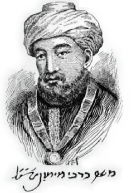Several patients from two unrelated families of Israeli Jewish ancestry presented to the oculoplastic clinic in the ophthalmology department at Soroka University Medical Center (SUMC), Beer-Sheva, Israel, with similar complaints of epiphora. Their pedigrees were obtained, and they underwent com-plete ophthalmic examination. General medical his-tory was reviewed, and systemic symptoms and signs were recorded. Clinical data, including demograph-ics, clinical presentation, systemic and ocular dis-orders, and treatment were collected for all affected individuals. The diagnosis of PANDO and CNLDO was made by history and physical examination, as well as by Jones tests, when needed. Study of this case series was approved by SUMC Institutional Review Board and Ethics Committee and adhered to the tenets of the Declaration of Helsinki.
Family A
Family A included 7 female patients with late-onset NLDO spanning four generations (
Figure 1). This non-consanguineous family was of Moroccan Jewish ancestry. All females diagnosed with late-onset NLDO were daughters of mothers also affected by the condition. The age of onset ranged from 18 to 40 years, with the presenting sign in all cases being epiphora (
Table 1). Most affected individuals had no history of chronic ocular or periocular inflamma-tion, sinus inflammatory disease, or systemic abnor-malities. Most affected individuals had normal find-ings on ophthalmic examination and no sinonasal pathology except NLDO. Blepharitis and cataract were diagnosed in two different subjects; however, these conditions are not known to be associated with NLDO. None of the patients had ptosis, facial dys-morphism, or abnormalities of eye movements. Two subjects had a history of sinusitis, but no correlation was found between sinusitis onset and epiphora exacerbations. Surgical intervention was necessary for NLDO treatment in all but one patient. A com-puted tomography scan of the orbits in one patient revealed normal results, showing no pathological or contributing factors to the obstruction.
 | Table 1 Family A: Demographics and Medical History of Affected Individuals. |
Family B
Family B, of non-consanguineous Ashkenazi ances-try, included 8 affected individuals: 2 female pa-tients in generation II were affected by late-onset NLDO, 1 patient in generation II was affected by CNLDO, and 2 male and 3 female patients in gener-ation III were affected by CNLDO which spontane-ously resolved with age (
Figure 2). No predisposing factors to NLDO were noted (
Table 2). Among the CNLDO cases, two were confirmed and recorded by a physician, and the other four were reported by parents.
 | Table 2 Family B: Demographics and Medical History of Affected Individuals. |
